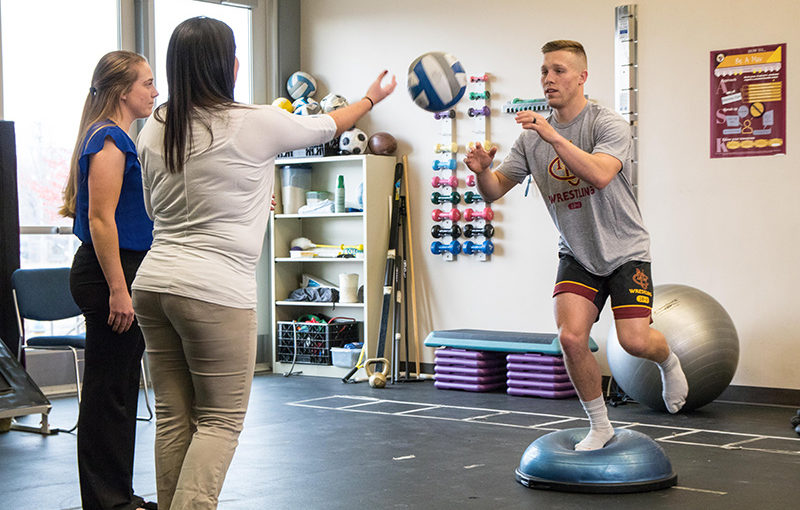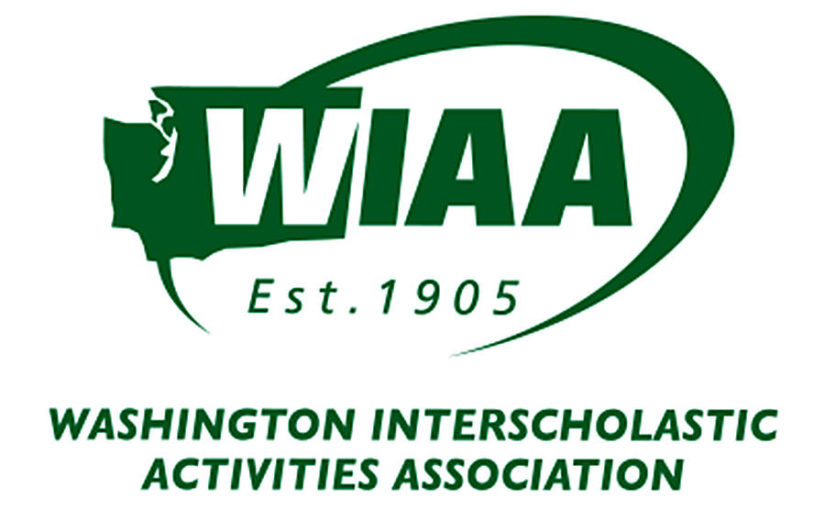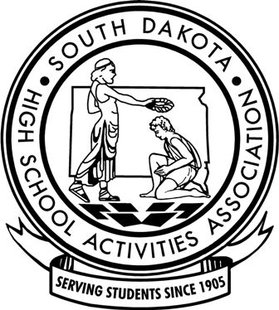A.D.ministration: The AD & The ATC
In one’s role as an athletic administrator, you have to develop working relationships with a number of people. Obviously, you interact with coaches, athletes, and administrators. Also throw parents into this mix, as well as teachers, officials, colleagues and so many more. There is, however, one more individual who is critical and essential, and this would be your athletic trainer. This person is responsible for the health and safety of student-athletes and this has to be the number one goal in any athletic department.
There are three essential elements necessary for a good working relationship between an athletic administrator and an athletic trainer. They would be support, communication, which needs to be two-way, and collaboration.
 Considering the aspect of support much more is involved than merely providing the financial resources for equipment and supplies. It is imperative that an athletic administrator informs the coaches and parents that the athletic trainer is the expert and, as such, is totally in charge with respect to treatment, rehabilitation, and return to play protocols dealing with any athletic injury. This means that there can be no interference, lobbying, or trying to circumvent an athletic trainer’s decisions. What this professional says, goes!
Considering the aspect of support much more is involved than merely providing the financial resources for equipment and supplies. It is imperative that an athletic administrator informs the coaches and parents that the athletic trainer is the expert and, as such, is totally in charge with respect to treatment, rehabilitation, and return to play protocols dealing with any athletic injury. This means that there can be no interference, lobbying, or trying to circumvent an athletic trainer’s decisions. What this professional says, goes!
This message may have to be repeated and it would be wise to include this notice in any documents and materials which are distributed to parents. In addition, this point has to be emphasized in every coaches’ meeting and, if there is a breach or disregard of the protocols and expectations, an athletic administrator has to step in and deal personally with uncooperative, misguided individuals. Your athletic trainer is in charge of the health and safety of student-athletes and this is an absolute.
In addition to spelling out this critical expectation, the following are some other practical ways in which you can show support for your athletic trainer.
- Always recognize the long days and dedicated service that an athletic trainer provides to the athletes and the athletic department. Not only do these individuals treat injuries at practice sessions and games, they often call to check on athletes in the evening and answer questions from parents. There may be occasions where they have to contact physicians or the team doctor with questions or for guidance and all of these efforts go well beyond the normal workday.
- Thank your athletic trainer publicly and this should be done beyond individual conversations. It is extremely important for your parents and the community to understand their value, dedicated service, and what they contribute to the athletes and the program. This can and should be done during awards programs, team banquets, parent-teacher association and booster club meetings, and any other logical opportunity.
- Try to provide all of the necessary equipment and materials in order for an athletic trainer to provide their service. While there will be budgetary limitations, do everything that you can to provide the best for them. If you have to cut in other areas, do so. But always remember that the health and safety of student-athletes have to be the number one objective.
- Provide swag such as baseball caps, t-shirts, sweatshirts, or whenever you can. While these items do represent small tokens, they do show that you appreciate their efforts. Also, include athletic trainers in championship celebrations, awards programs, and other appropriate team and department activities since these individuals make it possible for athletes to participate and, if injured, to return to the team. In this sense, an athletic trainer is a valuable member of each and every team.
- Help your athletic trainer by providing professional development funds to attend clinics, conferences, and in-service training opportunities. All athletic trainers have to complete ongoing, professional development to maintain their certification and if you can help underwrite the cost or some of it, this would be a great way of showing your support.
» ALSO SEE: The Impact of Professional Development
Beyond support, it is also vital that good communication exists between yourself and your athletic trainer and this aspect really has to be a two-way street. If a major injury has occurred, for example, your athletic trainer has to keep you in the loop. You have to be proactive and also inform the principal and superintendent so that they are not blindsided.
On your end, you need to provide the athletic trainer with any schedule changes for games and practice sessions, due dates for budget requests, and all details related to their position. Your part has to be done in an efficient, timely, and professional manner so that an element of trust is established.
After having demonstrated support and developing a sound basis for communication, actual collaboration can be achieved. This is where both of you should be involved in creating protocols and procedures involving the reporting of athletic injuries, prevention techniques, the stages of rehabilitation, and everything pertaining to athletic training efforts for your athletes, teams, and program.
For the process of collaboration, the following hints should help.
- Make sure that you revise and perhaps develop new protocols to cover any new developments. A good, recent example was the emergence of COVID-19 which obviously needed new guidelines and procedures since nothing existed to help with this novel health issue. And over the last few years, the same could be said concerning MRSA and the most recent research involving concussions.
- Publish any new guidelines, procedures, and protocols on athletic department letterhead which includes both your and the athletic trainer’s signature. This step provides more weight and makes the document much more official, which is important for it to be taken seriously.
- Annually evaluate the athletic training program. This analysis should be undertaken jointly by both parties and should be conducted in the same manner as all other aspects of the athletic program. You want to ask yourself in an honest and straightforward manner, “What was done well, and what could be improved?” With contributions from both yourself and the athletic trainer, real progress can be made.
- Develop a three-year strategic plan based on your evaluation. This is a significant step because it represents more than just talk. It is an actual plan for meaningful action and it is a document by which you judge success.
It is important to realize that these three aspects of support, communication, and collaboration are all intertwined. In order to collaborate, for example, you have to communicate effectively. When you collaborate, this is a strong indicator of support. They are all necessary and work together to develop a good working relationship. And this relationship is essential for the health and safety of your student-athletes.





